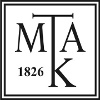Korányi, Dávid and Zsebők, Sándor and Báldi, András and Brambilla, Mattia and Varga, Máté and Batáry, Péter (2025) Forest cover enhances pest control by birds and bats independently of vineyard management intensity. JOURNAL OF APPLIED ECOLOGY, 00. pp. 1-12. ISSN 0021-8901
|
Text
JAPPL_inpress_Koranyi.pdf - Published Version Download (1MB) | Preview |
Abstract
Agricultural intensification substantially threatens farmland communities and associated ecosystem services. More specifically, landscape simplification and agrochemical use can significantly alter the activity of natural enemies, contributing to hampered pest suppression. At the same time, the effects of these factors on vertebrate predators and their contribution to pest control are relatively understudied, especially in European permanent crops. Using exclosures in Hungarian vineyards, we investigated the effect of birds and bats on arthropods affecting ecosystem functions and crop yield considering the local management (organic vs. integrated pest management [IPM]) and contrasting landscape heterogeneity of the plantations. We also collected abundance data of the European grapevine moth ( Lobesia botrana ) and canopy‐dwelling herbivorous and predatory arthropods and quantified fruit and leaf damage and sentinel prey predation associated with these groups. As opposed to summer bat activity, forested and connected landscapes promoted high insectivorous bird abundance and bat activity in spring and contributed to lower fruit damage caused by L. botrana . Vineyard management showed no effect on birds and bats. In contrast, canopy‐dwelling arthropod density was higher in organic than in IPM vineyards, resulting in higher leaf herbivory and the occurrence of caterpillar predation there. Bird and bat exclusion increased leaf herbivory and fruit damage, leading to higher yields in control plots. Furthermore, increased bat activity significantly decreased the abundance of the major grape pest, L. botrana, in spring. Synthesis and applications . Our results highlight the importance of bats and birds in reducing herbivory and increasing economic benefits in vineyards. Their presence and foraging activity can be promoted by connected landscapes incorporating hedgerows and small groups of trees as well as native, deciduous forest patches that can potentially increase the amount of food sources and suitable nesting and roosting sites. Organic vineyards in these landscapes can further enhance pest control services by supporting predatory arthropods.
| Item Type: | Article |
|---|---|
| Uncontrolled Keywords: | biocontrol, cage experiment, ecosystem services, herbivory, landscape, management, natural enemies, predation |
| Subjects: | Q Science / természettudomány > QH Natural history / természetrajz > QH540 Ecology / ökológia |
| SWORD Depositor: | MTMT SWORD |
| Depositing User: | MTMT SWORD |
| Date Deposited: | 23 Jun 2025 14:03 |
| Last Modified: | 23 Jun 2025 14:03 |
| URI: | https://real.mtak.hu/id/eprint/220238 |
Actions (login required)
 |
Edit Item |



